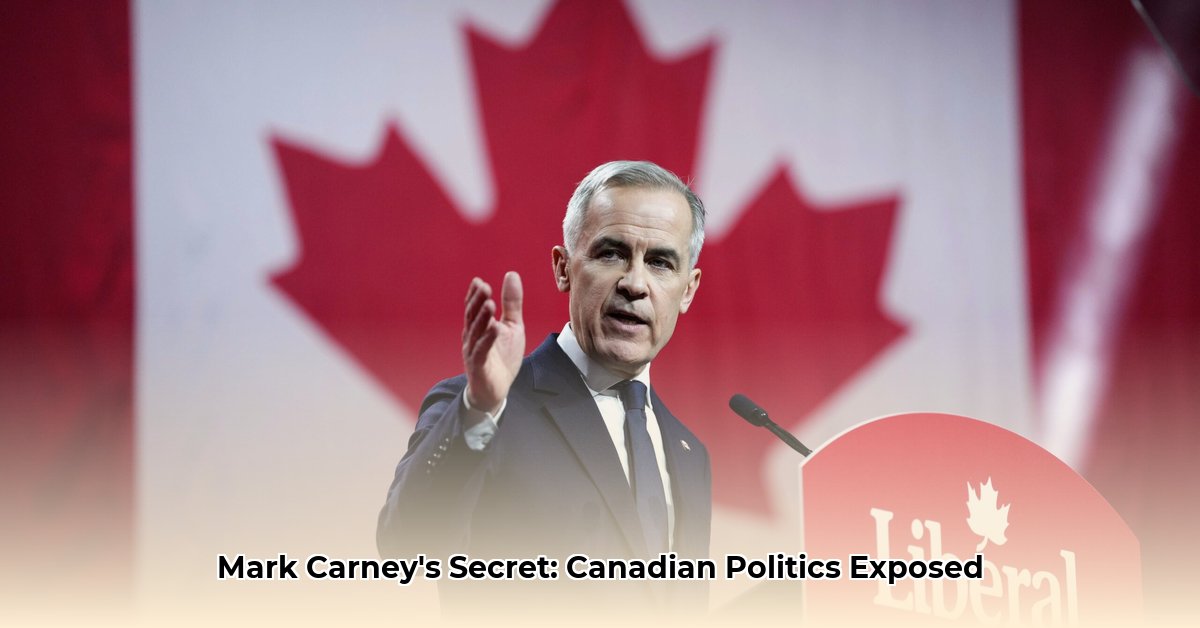
Understanding Mark Carney's Influence on Canadian Politics
This article explores the significant influence of Mark Carney on Canadian politics, moving beyond the pursuit of his personal contact information to examine his broader impact on economic policy and climate change initiatives. While direct contact details remain elusive, understanding the ways in which he shaped policy provides a far more insightful perspective. For those still seeking contact, try this resource.
The Ripple Effect: Carney's Impact on Canadian Economic Policy
Mark Carney's tenure as Governor of the Bank of Canada was transformative. He wasn't merely a figurehead; he actively shaped the national economic discourse, influencing policy decisions far beyond interest rate adjustments. His focus on climate change and financial stability brought these critical issues to the forefront of political debate, influencing politicians and policymakers alike. This influence, however, is not easily quantified by a phone number. It's woven into the fabric of Canadian economic policy itself.
Did Mark Carney single-handedly rewrite Canadian economic policy? No. But his advocacy for forward-thinking, inclusive policies undeniably played a significant role in shaping the current economic landscape. This influence is seen not in personal contact, but in the results of his policies and their lasting effects.
Climate Change Advocacy: A Global Voice from Canada
Carney's powerful advocacy extended beyond domestic borders, significantly impacting international climate change negotiations. His involvement with the G20's Financial Stability Board highlights his global reach, further underscoring the limitations of focusing solely on obtaining his personal contact information. His influence resonates in international climate agreements and policies, transcending the limitations of direct contact.
How did Carney's climate change advocacy translate into tangible policy outcomes in Canada? This requires in-depth research, examining policy documents, parliamentary transcripts, and analyses of his public statements. It’s a complex process, a detective story of influence, not a simple directory lookup.
Analyzing Carney's Influence: A Multifaceted Approach
Understanding Carney's impact necessitates a comprehensive approach, going beyond the pursuit of personal contact. The following strategies offer a more thorough understanding of his influence:
Policy Document Analysis: Scrutinize legislation passed during his tenure, comparing his public statements to identify correlations between his remarks and resulting policies. This method allows for a direct correlation between his pronouncements and concrete policy outcomes.
Media Analysis: Investigate news articles and opinion pieces to gauge media portrayals of his role in shaping policy. Positive, negative, or nuanced portrayals reveal public perception and its impact on subsequent political decisions.
Academic Research: Explore scholarly articles and research papers focusing on Carney's influence on Canadian financial and political institutions. Academic studies offer rigorous analysis and diverse perspectives often absent from direct contact.
Navigating the Canadian Carbon Tax for Small Businesses
The Canadian government's carbon tax presents significant challenges for small businesses. This section provides crucial information on the Canadian Carbon Rebate for Small Businesses (CRSB) and actionable steps to navigate the complexities of this policy.
Understanding the Canadian Carbon Rebate for Small Businesses (CRSB)
The CRSB aims to mitigate the financial burdens of the carbon tax on eligible Canadian-controlled private corporations (CCPCs). While designed as an automatic payment, its effectiveness and tax implications remain highly debated. The amount received often falls short of the carbon taxes paid, leading to concerns about its adequacy. Additionally, the CRA's classification of the rebate as taxable income contrasts with initial government statements, introducing further uncertainty.
Navigating CRSB Eligibility and Limitations
Eligibility hinges on being a CCPC with fewer than 500 employees, a criterion that excludes businesses with numerous part-time employees, even if their overall workforce is smaller than larger corporations. This creates an uneven playing field, with regional inconsistencies further complicating the matter. The program's exclusion of businesses in British Columbia and Quebec underscores its fragmented nature.
Actionable Steps for Small Businesses Facing Carbon Tax Implications
Small businesses should actively pursue these strategies:
Seek Professional Tax Advice: Consult with accountants and tax advisors to understand the full implications of the CRSB and potential tax liabilities.
Monitor Legislative Updates: Remain informed about changes to the CRSB program and related legislation.
Meticulous Record Keeping: Maintain precise financial records for accurate reporting and compliance.
Engage in Industry Advocacy: Collaborate with industry associations to lobby for policy improvements and a more equitable system.
Long-Term Strategies for Sustainability
For long-term sustainability, small businesses should explore:
Energy Efficiency Investments: Investing in energy-efficient technologies reduces operating costs and environmental footprint.
Alternative Funding Exploration: Research other government programs and incentives that support green initiatives and energy efficiency.
Policy Reform Advocacy: Participate in initiatives that promote a more equitable and effective carbon tax system.
Understanding Mark Carney's substantial impact requires a nuanced approach that moves beyond the pursuit of his direct contact information. While his personal details remain private, analyzing his actions and their impact provides a much richer and more valuable understanding of his legacy in Canadian politics.